NIL
Huskies Host St. John’s this Weekend for the BIG EAST Regular Season Title
Story Links STORRS, Conn. – The UConn softball team is set to welcome the St. John’s Red Storm to Storrs this weekend from May 2-4. The three-game series will decide the BIG EAST Regular Season Championship with both teams currently tied in first place with 17-4 conference records. All three games will […]
STORRS, Conn. – The UConn softball team is set to welcome the St. John’s Red Storm to Storrs this weekend from May 2-4. The three-game series will decide the BIG EAST Regular Season Championship with both teams currently tied in first place with 17-4 conference records. All three games will be streamed on FloSports. Get your tickets at UConnTickets.com.
UConn comes into the final weekend of the regular season, winners in nine of their last ten games. The Huskies reached the 30-win mark for the fourth season in a row, posting a 31-15 record so far this season.
UConn’s offense has produced all season long, leading the BIG EAST in batting average (.329), home runs (66), doubles (81), runs scored (339), slugging percentage (.556), and on base percentage (.414). UConn ranks in the top 20 nationally in doubles per game (8th – 1.76), home runs per game (17th – 1.43), RBIs per game (15th – 6.91), and scoring (13th – 7.37).
The two home run leaders this season in the BIG EAST are both Huskies. Junior catcher Grace Jenkins has 18 homers on the year and sophomore outfielder Kaitlyn Breslin is not far behind her with 16.. Jenkins leads the BIG EAST in doubles (19), home runs per game (0.39), RBI (63), and slugging percentage (.896). She has reached base safely in 24 straight games. Breslin is enjoying a breakout sophomore campaign, hitting .408 with 53 hits, and 51 RBI, reaching base safely in 13 straight games.
Scouting St. John’s (37-14-1, 17-4 BIG EAST)
The St. John’s Red Storm are coming off a series sweep at Villanova this past weekend and are winners in five of their last seven games. The Red Storm are coached by Michelle Depolo in her second season. St. John’s returns All-BIG EAST players in London Jarrard, Jess Bianco, and Ana Serafinko to their 2025 roster. The Johnnies boast a stout pitching staff, ranking No. 1 in the country in team strikeouts per seven innings (9.36). Led by Serafinko, the junior left hander leads the BIG EAST with 260 strikeouts this season, ranking second nationally. St. John’s took two of three in year’s regular season series with the Huskies in Queens. UConn leads the all-time series 57-17.
Follow our social media pages for updates.
Twitter – UConnSoftball
Instagram – UConnSoftball
Facebook – UConn Softball
NIL
Here’s how much everybody spent to make the College Baseball and Softball Tournaments
Good morning, and thanks for spending part of your day with Extra Points. When we built the Extra Points Library, one of the documents we sought from every single public D-I and D-II institution was their itemized NCAA Financial Report. This report is a budget that breaks down exactly where athletic department revenues come from, […]

Good morning, and thanks for spending part of your day with Extra Points.
When we built the Extra Points Library, one of the documents we sought from every single public D-I and D-II institution was their itemized NCAA Financial Report. This report is a budget that breaks down exactly where athletic department revenues come from, and where they spent their money. It’s also helpfully itemized by sport.
Is this data perfect? No, nothing in college sports accounting is perfect. But as far as I’m aware, it’s the best standardized data set we have when it comes to finances and college athletics.
Using this data, I dug into the reported team-specific budgets for every baseball and softball program that earned a spot in their respective NCAA Tournament.
These budget numbers do not include athlete NIL payments. The budgets reported to the NCAA are for team operational expenses. These budgets cover things like coaching salaries, team travel, athlete meals, athlete equipment, game guarantees, recruiting, advanced stats software, severance payments, etc.
I obtain copies of university NCAA Financial Reports thanks to lots and lots of Open Records Act requests. That means that I do not have access to financial reporting from private schools, or from public athletic departments that are exempt from traditional records requests, like UCF. If anybody would like to leak those reports to me, I’d be more than happy to give you free access to the Extra Point Library in exchange. Y’all have my email.
Here are the reported team baseball budgets for College Baseball Tournament participants:
|
School |
Budget (in $) |
|
Tennessee |
13,419,669 |
|
Texas |
11,534,440 |
|
LSU |
9,989,478 |
|
Arkansas |
9,159,809 |
|
Ole Miss |
9,124,735 |
|
Florida |
6,831,221 |
|
Alabama |
6,689,112 |
|
Mississippi State |
6,564,901 |
|
Clemson |
6,471,782 |
|
Auburn |
6,448,543 |
|
Oklahoma |
5,782,463 |
|
Louisville |
5,591,981 |
List continued, along with the softball data and some #takeaways, after the jump:

Want to read the rest of the newsletter? Subscribe today!
Premium Subscriptions make Extra Points possible. Upgrade today to get access to everything we write:
Already a paying subscriber? Sign In.
NIL
NiJaree Canady’s $1M NIL Deal Pays Off As Red Raiders Eye WCWS Title
Texas Tech pitcher NaJaree Canady celebrates on the mound. The Red Raiders defeated No. 2 overall … More NCAA seed Oklahoma to head to the championship series against Texas starting Wednesday, June 4, 2025. Texas Tech Athletics When news came out in the summer of 2024 that Stanford ace NiJaree Canady was transferring, the softball […]

Texas Tech pitcher NaJaree Canady celebrates on the mound. The Red Raiders defeated No. 2 overall … More
Texas Tech Athletics
When news came out in the summer of 2024 that Stanford ace NiJaree Canady was transferring, the softball world was shocked. The now junior ace has accumulated unheard of statistics as well as numerous awards during her short time in college softball including 2025 USA Softball Collegiate Player of the Year, Big 12 Pitcher of the Year, First Team All-Big 12 Selection and a Top 3 Finalist for the Honda Sport Award for Softball.
Now softball’s biggest name is taking her new team Texas Tech to the Women’s College World Series championship series for the first time in program history. For Texas Tech, they made history not only with their journey to the championship series, but also the investment to make it happen.
The Red Raiders awarded Canady a $1,050,024 NIL deal for this season. The deal included $1 million in NIL money, $50,000 for living expenses, and $24 to represent her collegiate number. No softball athlete has ever reached a number this high.
Texas Tech starting pitcher/relief pitcher NiJaree Canady (24) during an NCAA softball Women’s … More
Copyright 2025. The Associated Press. All rights reserved.
To say that Canady was worth the figure would be an understatement. Canady is a dual threat as she not only is the ace in the circle for the Red Raiders, but also one of their most lethal hitters.
Head coach Gerry Glasco was well aware of Canady’s talent when he met with her and talked about her joining him at Texas Tech in his first season with the Red Raiders. He said, “We’re talking about a once-in-a-generation player that’s already made a name all over America. She’s a folk hero in our sport, and she’s a sophomore [at the time].” He continued, “We look at it as they deserve it just as much (as male athletes). She worked so hard to be the No. 1 pitcher in the country. … I left that meeting and thought, this is who I would love to put a lot of effort into because of who she is.”
Head coach Gerry Glasco and NaJaree Canady (24) celebrate after one of her home runs this season.
Texas Tech Athletics
This season, Canady is batting .297 with a slugging percentage of .638 and an on-base percentage of 1.121. Additionally, Canady has recorded 34 RBIs, 30 hits, six doubles, and 11 home runs in her 101 at bats.
On the mound, Canady is a machine with a posted 0.90 earned run average, conceded only 29 earned runs, 118 his, 44 walks, and 304 strikeouts in 226 innings. Her ERA is ranked first in the nation for Division I , seventh in shutouts, third in total strikeouts and strikeout to walk ratio, and ninth in strikeouts per seven innings.
As the Red Raiders begin their championship series play on Wednesday, June 4 at 8 pm EST on ESPN the team will count on Canady’s star power to shine through and bring home the program’s first ever title.
Follow me on X, LinkedIn, and Instagram.
NIL
NiJaree Canady's $1M NIL Deal Pays Off As Red Raiders Eye WCWS Title
When news came out in the summer of 2024 that Stanford ace NiJaree Canady was transferring, the softball world was shocked. The now junior ace has accumulated unheard of statistics as well as numerous awards during her short time in college softball including 2025 USA Softball Collegiate Player of the Year, Big 12 Pitcher of […]
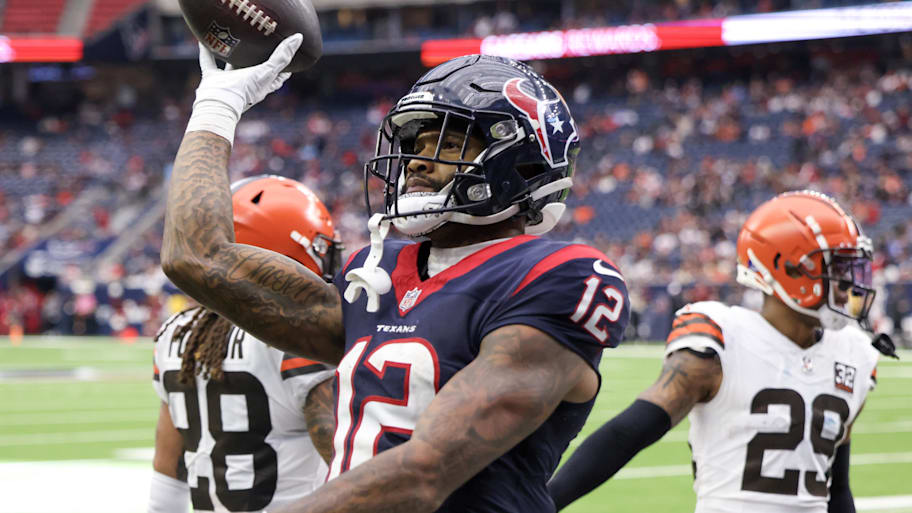
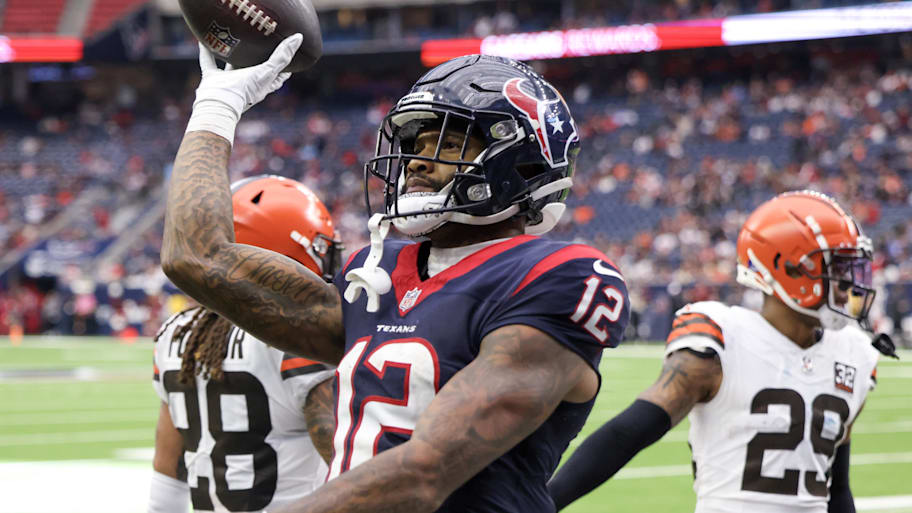

When news came out in the summer of 2024 that Stanford ace NiJaree Canady was transferring, the softball world was shocked. The now junior ace has accumulated unheard of statistics as well as numerous awards during her short time in college softball including 2025 USA Softball Collegiate Player of the Year, Big 12 Pitcher of the Year, First Team All-Big 12 Selection and a Top 3 Finalist for the Honda Sport Award for Softball.
Now softball’s biggest name is taking her new team Texas Tech to the Women’s College World Series championship series for the first time in program history. For Texas Tech, they made history not only with their journey to the championship series, but also the investment to make it happen.
The Red Raiders awarded Canady a $1,050,024 NIL deal for this season. The deal included $1 million in NIL money, $50,000 for living expenses, and $24 to represent her collegiate number. No softball athlete has ever reached a number this high.
Texas Tech starting pitcher/relief pitcher NiJaree Canady (24) during an NCAA softball Women’s … More
Copyright 2025. The Associated Press. All rights reserved.
To say that Canady was worth the figure would be an understatement. Canady is a dual threat as she not only is the ace in the circle for the Red Raiders, but also one of their most lethal hitters.
Head coach Gerry Glasco was well aware of Canady’s talent when he met with her and talked about her joining him at Texas Tech in his first season with the Red Raiders. He said, “We’re talking about a once-in-a-generation player that’s already made a name all over America. She’s a folk hero in our sport, and she’s a sophomore [at the time].” He continued, “We look at it as they deserve it just as much (as male athletes). She worked so hard to be the No. 1 pitcher in the country. … I left that meeting and thought, this is who I would love to put a lot of effort into because of who she is.”
Head coach Gerry Glasco and NaJaree Canady (24) celebrate after one of her home runs this season.
Texas Tech Athletics
This season, Canady is batting .297 with a slugging percentage of .638 and an on-base percentage of 1.121. Additionally, Canady has recorded 34 RBIs, 30 hits, six doubles, and 11 home runs in her 101 at bats.
On the mound, Canady is a machine with a posted 0.90 earned run average, conceded only 29 earned runs, 118 his, 44 walks, and 304 strikeouts in 226 innings. Her ERA is ranked first in the nation for Division I , seventh in shutouts, third in total strikeouts and strikeout to walk ratio, and ninth in strikeouts per seven innings.
As the Red Raiders begin their championship series play on Wednesday, June 4 at 8 pm EST on ESPN the team will count on Canady’s star power to shine through and bring home the program’s first ever title.
NIL
An NIL framework could be on the way. What does it mean for UF?
The NCAA has been searching for a framework to regulate name, image and likeness, or NIL, since the policy was established in June 2021. Four summers later, a possible foundation is near, but no change will be without implications, especially for top athletic programs like the University of Florida. These changes have loomed for almost […]
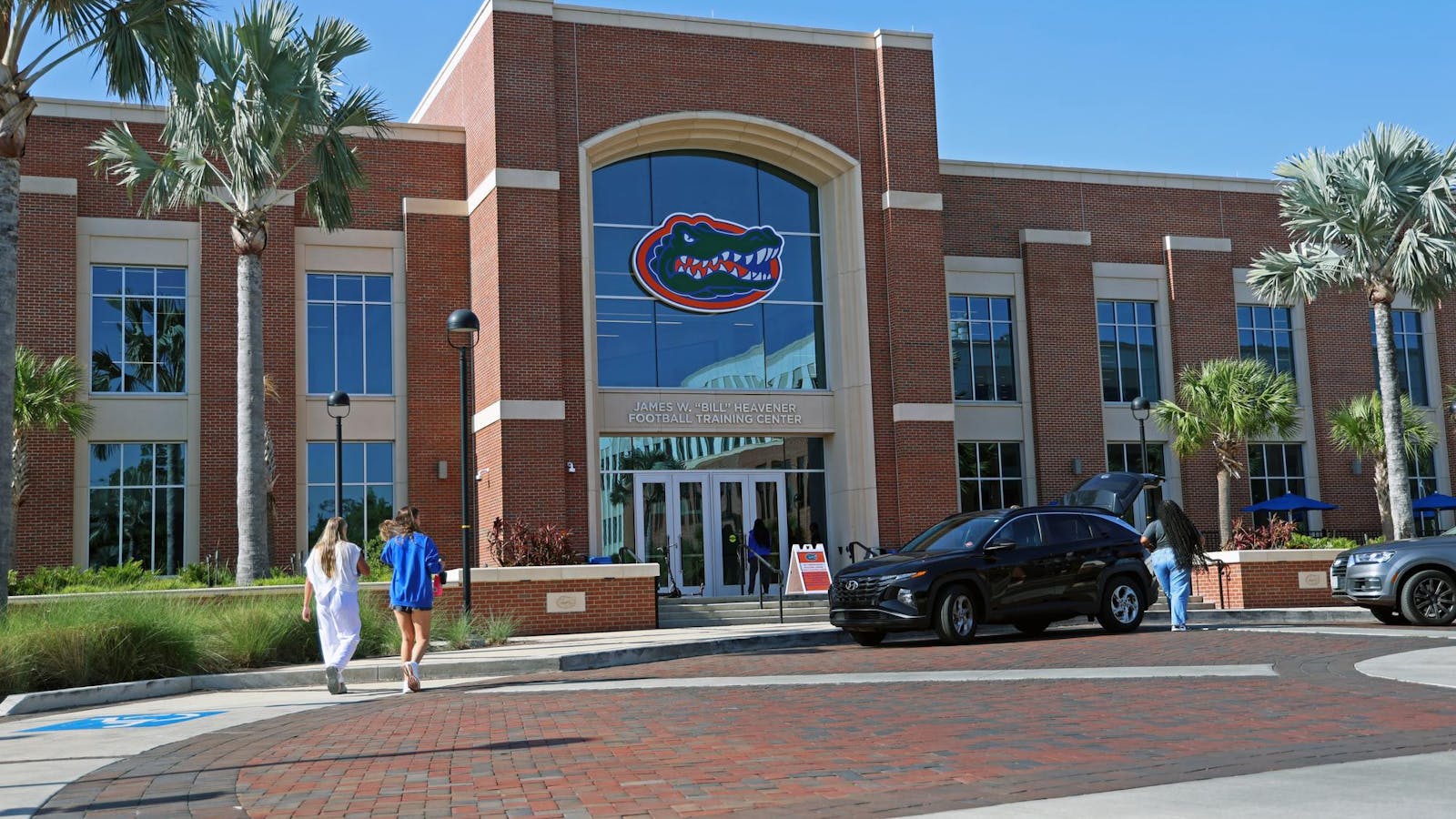
The NCAA has been searching for a framework to regulate name, image and likeness, or NIL, since the policy was established in June 2021. Four summers later, a possible foundation is near, but no change will be without implications, especially for top athletic programs like the University of Florida.
These changes have loomed for almost a year. President Donald Trump publicly considered an executive order May 2 to examine the state of NIL payments. Schools and athletes must heavily consider how these developments will impact their programs.
The prominent NIL discussion surrounds the House settlement. Lawsuits by current and former college athletes are pursuing a settlement of nearly $2.8 billion that will attempt to establish a future framework for NIL agreements.
Philip Nickerson, a Troutman Pepper Locke law firm associate who represents universities and collectives in NIL matters, said the settlement contains four major parts: allowing schools to pay athletes themselves for use of their NIL with an annual budget of $20.5 million, the potential for roster caps, NIL compliance and enforcement oversight, and backpay for former and current athletes who were unable to profit from their NIL.
In his personal interpretation, this could mean many of UF’s resources responsible for its success could become less prominent, Nickerson said.
“It puts a limit on how much they can spend, which means that smaller schools that maybe don’t have the same athletic budget or donor base have a chance to compete for the prized recruits and remain competitive,” Nickerson said. “I think it’s going to level the playing field across all college sports.”
UF would be forced to rely on its coaches and recruiting staff even more to out-recruit other schools for star high school athletes and in the transfer portal.
Christopher Batts, an attorney at ShuffieldLowman, represents students and institutions navigating NIL deals.
“I think the real impact is going to be on the school, and then that’s going to trickle down to the athletes,” Batts said. “Trying to divide up $20.5 million amongst a bunch of really good athletic programs is going to be way more difficult than for schools that are known just for basketball or just for football.”
Title IX compliance will complicate the issue, he said, but it will also prevent schools from putting all of the allotted $20.5 million into their higher-revenue sports like football and men’s basketball.
Even with these changes, Batts said there’s likely more to come.
“I think it opens just as many new issues as it resolves,” he said. “It doesn’t address Title IX. It doesn’t introduce collective bargaining.”
Enjoy what you’re reading? Get content from The Alligator delivered to your inbox
UF Director of NIL Strategy Ben Chase said Florida is more than ready to handle whatever changes head its way.
“Our goal here at Florida is to make sure that we give our athletes the opportunity to compete at a high level across all the sports we have,” Chase said. “There’s a lot of schools out there that are cutting sports, including at the Power Four level, and we don’t plan on doing that.”
He doesn’t foresee the changes affecting investments from donors and partners who have been a huge part of the success of Gator sports, he said. Instead, Chase sees benefits in the new settlement because it allows the UF Athletic Department to share the revenue with its athletes.
Chase said he’s excited about the opportunities UF’s athletes will have going forward, including more NIL deals.
“I think that where we are headed is true corporate NIL partnerships that are with athletes that may have never gotten those deals before,” he said.
A decision is expected to be made on the settlement in the next few months if executive action isn’t taken sooner.
Contact Ava DiCecca at adicecca@alligator.org. Follow her on X @avadicecca24.
The Independent Florida Alligator has been independent of the university since 1971, your donation today could help #SaveStudentNewsrooms. Please consider giving today.
NIL
$2.8 billion House v. NCAA settlement hangs in balance as attorneys file brief to address roster-limit concern
The marathon legal battle regarding player compensation and the makeup of college athletics in a landmark, multibillion-dollar antitrust case may have finally hit the homestretch Wednesday night. Attorneys involved in a $2.8 billion settlement filed a brief tweaking the aspect of roster limits in the House v. NCAA settlement, which they hope will convince a […]
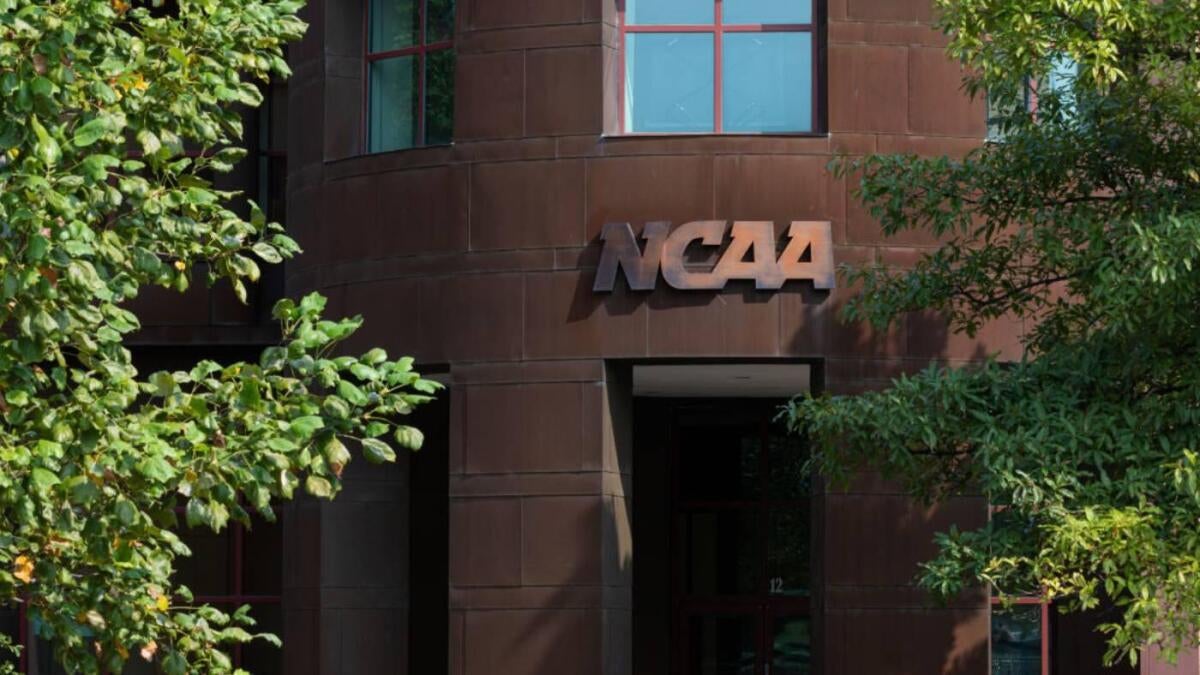
The marathon legal battle regarding player compensation and the makeup of college athletics in a landmark, multibillion-dollar antitrust case may have finally hit the homestretch Wednesday night.
Attorneys involved in a $2.8 billion settlement filed a brief tweaking the aspect of roster limits in the House v. NCAA settlement, which they hope will convince a federal judge to grant final approval. The judge twice voiced concerns over proposed roster limits, a small but significant aspect of the deal that will enable schools to pay athletes a portion of their media revenues, capped at $20.5 million, starting July 1.
Schools will be allowed — but not required — to reinstate players who were cut from rosters during the 2024-25 academic year without those players counting against new roster limits set to be implemented July 1. Purged players exempt from roster limits can also transfer to new schools.
The key language in the brief, however, is that roster-limit exceptions are to be made at a school’s discretion. It remains to be seen if the brief will satisfy Judge Claudia Wilken of the Northern District of California, who specifically asked attorneys to “grandfather” all players into the deal, after twice delaying a decision on whether to approve the settlement in April.
“In other words, there are no guarantees that designated student-athletes will get or maintain roster spots,” the NCAA and power conference’s counsel wrote in a supplemental brief Wednesday. “But that does not adversely affect any injunctive relief class member.”
High school seniors who were promised scholarships that were later rescinded because of the proposed roster limits will also be exempt.
Now, college athletics waits – again – for a decision from federal court. Wilken gave preliminary approval in October, speaking in favor of most aspects of the deal. However, she has twice delayed final approval because of language tied to roster limits, which could lead to an estimated 5,000 players being cut from sports across the NCAA.
Several objectors testified April 7 against replacing scholarship limits with roster limits at a settlement hearing in the District Court of Northern California. In a brief filed April 23, Wilken ordered attorneys to develop a plan to “grandfather” current players into the agreement, allowing schools to temporarily exceed new limits as part of a phase-in solution for rosters. A two-week negotiation ensued.
If Wilken is not satisfied with the parties’ resolution and declines final approval, the case may advance to trial, a daunting prospect for the NCAA, which has been bludgeoned legally over student-athlete compensation and lambasted by the Supreme Court over the last five years. If the NCAA and power conferences lose in trial, the parties could be liable for $20 billion in damages.
If the settlement is not approved, schools may soon turn to their state governments to help legalize direct pay to players, who have planned to be paid a share of the $20.5 million pool next fall.
Wilken’s request on April 23 to renegotiate aspects of roster limits sent shockwaves across the country, complicating matters for many schools that had already begun cutting players from rosters. Under the preliminary settlement released in October, football rosters were set to shrink to 105 players, meaning as many as 30-plus players would be cut at each school. Even before the judge’s final approval, schools began to cut players in the spring in preparation for the settlement’s implementation on July 1.
Putting the toothpaste back in the tube could prove difficult for athletic departments. Some purged players landed at new schools, but many remain without a home, hoping to land again at their former schools. Most schools might be unwilling to re-sign players and spend extra scholarship money – as well as room and board, meals and health care – that balloon already-tight budgets.
In a brief filed April 23, Wilken was unmoved by the schools’ plight, writing that “any disruption that may occur is a problem of Defendants’ and NCAA members schools’ own making.”
The settlement’s touchstones remain uncchanged. Starting July 1, NCAA schools can share as much as $20.5 million in revenue with their athletes, and former athletes who played between 2016 and 2024 will be paid $2.8 billion in back payments if the settlement is approved.
Each school’s revenue-sharing cap will increase 4% each year during the 10-year agreement.
What is House v. NCAA?
The class-action antitrust lawsuit was filed in 2020 by Arizona State swimmer Grant House and women’s college basketball player Sedona Prince seeking an injunction against the NCAA and the Power Five conferences. It sought to lift restrictions on revenue sharing of media rights revenues.
Powerful antitrust attorneys Steve Berman and Jeffrey Kessler represented the plaintiffs.
If approved by the judge, the settlement would resolve three antitrust lawsuits: Carter v. NCAA, House v. NCAA and Hubbard v. NCAA.
What’s next?
A decision: Judge Claudia WIlken will study the brief and decide whether to grant final approval to the House v. NCAA settlement, which was first introduced in October and has included months of negotiations.
Revenue-sharing formula: Many schools are preparing to mirror the back-payment formula in their revenue-sharing model for the future. That means roughly 75% of future revenue will be shared with football players, 15% to men’s basketball, 5% to women’s basketball and 5% to all remaining sports. Those numbers will differ from school to school, but most power programs have shared similar models with administrators.
CBS Sports has learned one school is preparing to share more than 85% of the $20.5 million pool with football players – a reflection of the percentage of annual revenue the sport generates for its athletics department.
More lawsuits: Concerns over Title IX and antitrust issues will continue after the settlement is approved. However, instead of the NCAA being the target, individual schools may soon become the focus of litigation. Each school will split the revenue pie based on its own formulas, meaning a women’s basketball player may sue a school if they believe they are not receiving their fair share of cash. The same can be said for a football player if their revenue share is lower than that of a rival player at another school.
The White House is set to weigh in: The NCAA has long lobbied Congress to pass legislation protecting the organization and its members from antitrust litigation. Now the White House has zeroed in on college athletics.
President Donald Trump is creating a presidential commission on college athletics to find solutions for “issues ailing the ecosystem,” according to Yahoo! Sports. Trump was considering an executive order to regulate NIL after meeting with former Alabama coach Nick Saban, according to the Wall Street Journal. Sen. Tommy Tuberville, the former Auburn coach, also met with Trump last week to discuss college athletics. Steve Berman, a lead attorney for the plaintiffs in the House case, criticized the president’s potential actions, saying that an executive order would lead to more lawsuits.
Sen. Ted Cruz is reportedly drafting a bill that could offer the NCAA limited antitrust protection. It’s not clear how Trump’s plans may affect Cruz’s draft.
New enforcement model: The power conferences are expected to launch soon the College Sports Commission, an enforcement arm to police the settlement among its schools. The new organization effectively replaces the NCAA regarding NIL enforcement, and will monitor NIL deals between players and third parties, and oversee revenue-sharing practices at schools. This new organization will also penalize schools and individuals who break rules.
Who is footing the bill? The NCAA is responsible for 40% of the $2.8 billion settlement, and the remaining 60% will come from reducing its revenue distributions to the 32 Division I conferences over the next 10 years ($1.6 billion). The NCAA is utilizing a formula based on revenue distribution presented to each league over a nine-year period starting in 2016, which leans heavily on basketball units tied to NCAA Tournament participation, according to Yahoo Sports. The Power Five conferences – ACC, Big Ten, Big 12, Pac-12 and SEC – will pay 24% of the overall damages, followed by the Group of Five at 10%.The FCS is on the hook for 14% and non-football conferences in Division I will pay 12% of the overall agreement, according to documents reviewed by CBS Sports.
House v. NCAA settlement terms
- $20.5 million salary cap for revenue-sharing at each Division I school (starting July 1)
- $2.77 billion in back payments to as many as 390,000 athletes who played an NCAA sport between 2016 and 2024.
- Outside NIL deals of more than $600 must be vetted by a third-party clearinghouse
- NIL deals must meet “fair market value.” How that fair-market value is determined is the subject of intense debate.
- Unlimited scholarships with new roster size limits
- At least 88,104 of approximately 390,000 athletes have filed back-pay claims, plaintiff attorney Steve Berman said in April. That number was expected to reach 118,879 at the end of April.
- 343 athletes opted out of the settlement
NIL
USC Trojans Transfer Running Back Inks Major NIL Deal with Beverage Giant
The USC Trojans have become one of the programs at the forefront of the Name, Image, and Likeness era. It makes a ton of sense why. From a brand appeal standpoint along with the fact of living in essentially perfect weather on the West Coast, young athletes are seeing USC as one of the best […]
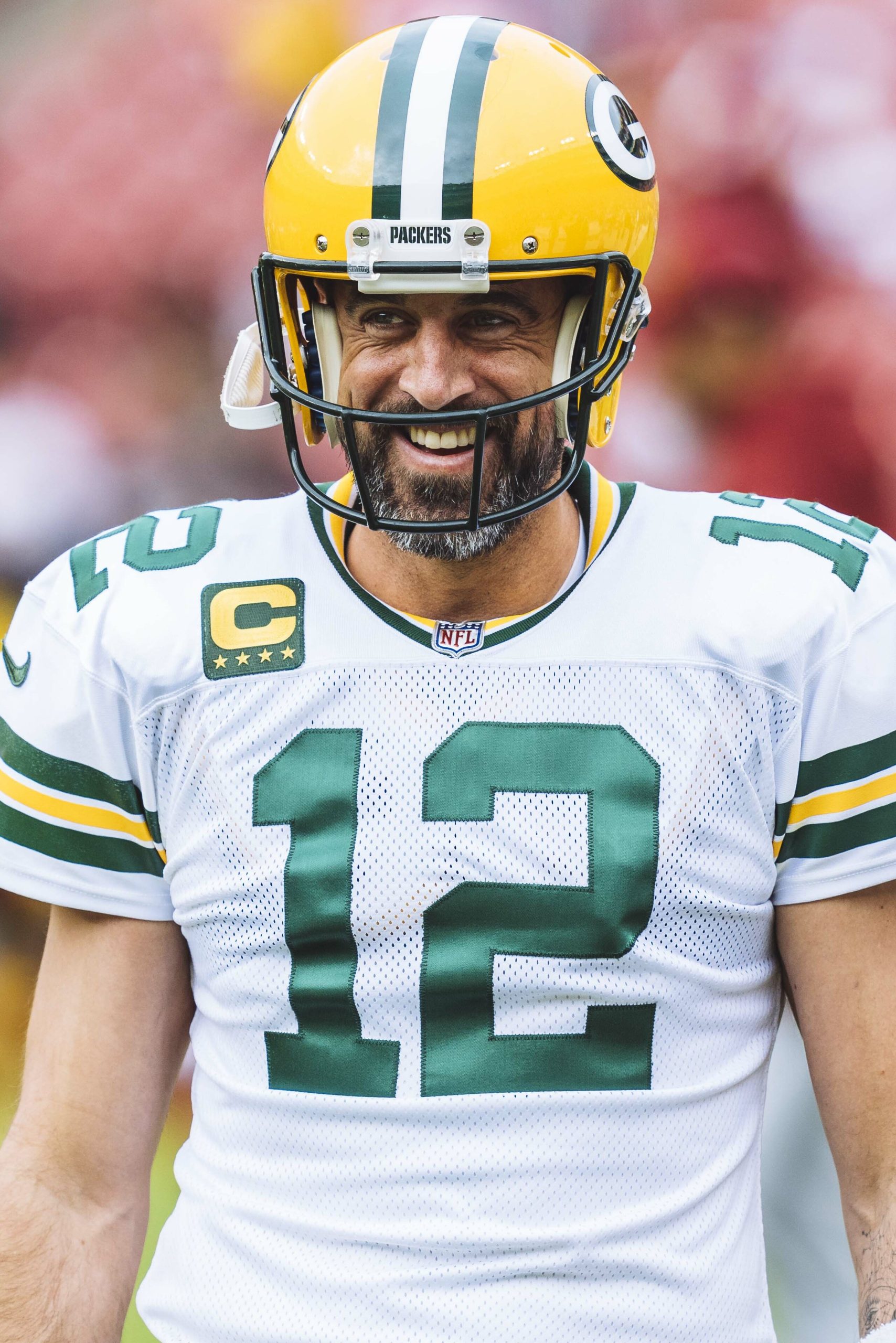

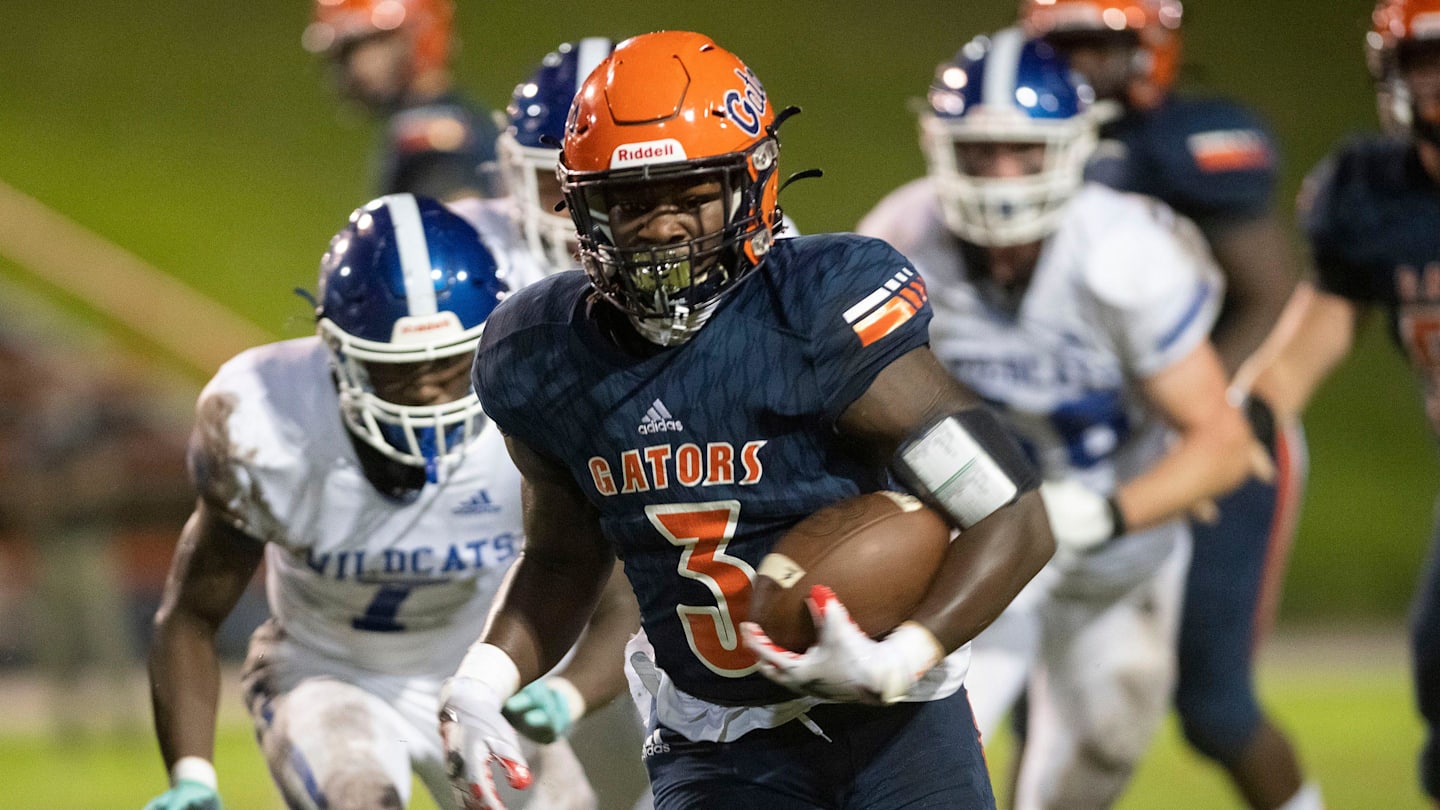
The USC Trojans have become one of the programs at the forefront of the Name, Image, and Likeness era.
It makes a ton of sense why.
From a brand appeal standpoint along with the fact of living in essentially perfect weather on the West Coast, young athletes are seeing USC as one of the best places for them to both play football and capitalize on their own brand.
One player is proving that to be the case just a few months after arriving on campus coming off a massive junior college season.
Former Hudson Community College standout Waymond Jordan transferred to the Trojans coming off a huge season for the Blue Dragons.
Jordan’s decision is hopeful to pay off on the field this coming fall, but it’s already proving to have been a great call from an off the field perspective.
The running back announced on his Instagram page that he has landed an NIL deal with C4 Energy, an extremely popular caffeinated energy drink brand:
Originally committed to the University of Central Florida, Jordan changed his mind when USC came calling, likely both for football and NIL-related reasons.
The deal with C4 is believed to be the first major brand agreement for the young ballcarrier, but the sky could be the limit if both he and his team have a big season this fall.
Last year, Jordan was named the NJCAA DI Football Offensive Player of the Year after a huge season for Hutchinson in which he had over 1,600 rushing yards and 20 touchdowns on the ground and helped lead the team to a national title.
As the No. 1 JUCO running back in the entire nation in the portal, expectations were always going to be high for Jordan.
Now that he’s landing major deals and becoming a household name, those expectations are only starting to increase.
-

 College Sports2 weeks ago
College Sports2 weeks agoPortal Update – Basketball and Gymnastics Take Hits
-

 Rec Sports3 weeks ago
Rec Sports3 weeks agoThe Program, a New Basketball Training Facility, Opening in Greenpoint This September
-

 College Sports2 weeks ago
College Sports2 weeks agoPortal Update – Basketball and Gymnastics Take Hits
-

 Professional Sports2 weeks ago
Professional Sports2 weeks agoJon Jones answers UFC retirement speculation as fans accuse champion of 'holding the belt …
-

 NIL1 week ago
NIL1 week ago2025 NCAA Softball Tournament Bracket: Women’s College World Series bracket, schedule set
-

 Health2 weeks ago
Health2 weeks agoBYU women's basketball guard injures ACL twice
-

 Youtube3 weeks ago
Youtube3 weeks agoTHE FINAL CALL: Golden State Warriors 2021-22 NBA Champions
-

 Youtube2 weeks ago
Youtube2 weeks agoXavier Legette taught Marty Smith his signature celly
-

 Youtube3 weeks ago
Youtube3 weeks agoThey need to add a gorilla next
(via @zackystrong.pt/TT)
-

 Youtube3 weeks ago
Youtube3 weeks agoThe WILDEST Round 1 NBA Playoff Endings of the Last 25 Years
| Pt. 1







 Reacting to LA’s EARLY playoff exit … is JJ Redick to blame?!
Reacting to LA’s EARLY playoff exit … is JJ Redick to blame?!  | First Take
| First Take



























